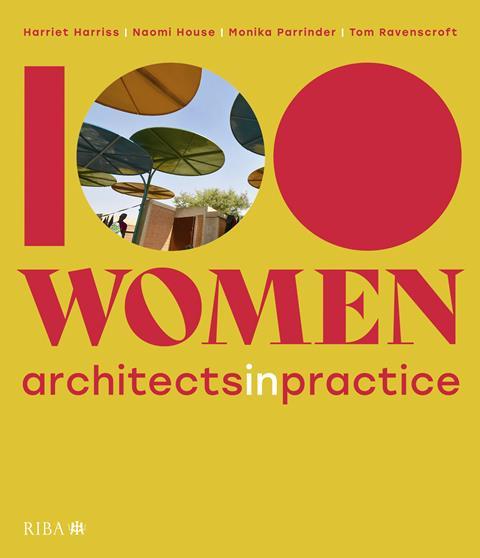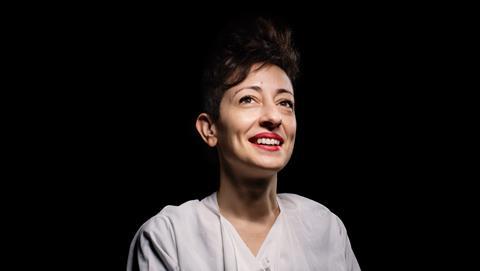A new book offers welcome inspiration for today’s practitioners, as well as for the next generation of women architects, writes Sumita Singha

You wait for a book about women in architecture and then three come along! Following on from my own book, Thrive: A field guide for women in architecture, comes 100 Women: Architects in Practice, and later in the year, the Bloomsbury encyclopaedia of women in architecture. What is great is that all these books are international in their scope, finally moving away from the Eurocentric depictions of women architects. The median percentage of women in architecture globally is around 33 percent, ranging from as low as 10 percent to a high of 53 percent. The discussion around why and how women can contribute to the design of the built environment remains a relevant one, as is the role of professional regulation in relationship to women’s participation.
100 Women is written by a combination of academics, designers, and writers: Harriet Harriss, Naomi House, Monika Parrinder and Tom Ravenscroft. In her foreword, the Canadian British architect, Alison Brooks, says, “In this book you will find a global survey of 100 visionary, inventive, wise, enterprising and accomplished architects” and goes on to say that such “emotive words are rarely found in the description of women… in professional disciplines such as architecture.”
The book covers five geographic areas: Africa, the Americas, Europe, Asia and Oceania, with approximately 80 countries and regions represented. The women featured range from the better known Danish architect, Dorte Mandrup, who wrote in 2017 that she wishes to be recognised as an architect, not a woman architect (also echoed here by Oana Bogdan, the Romanian Belgian architect and Francine Houben from the Netherlands), to many others whose names or work might be less familiar to those in the West. This latter group includes South Korean, Sook Hee Chum, whose building ’Dialogue in the Dark’ invites visitors to experience everyday activities in complete darkness in empathy with those with sight problems; Habibeh Madjabedi, with her intricately crafted, ‘House of 40 knots’ in Tehran and Daliana Suryawanta’s unconventional ‘microlibaries’ in Indonesia.
The authors call this book a “coffee table trojan horse”. It may be a coffee table book in the sense that the definition of practice embraces anything from pure activism to conventional buildings, the sparsity of technical drawings, and the selection of featured women coming from recommendations rather than specific criteria. However, I believe that it is more than a coffee table book.
That many of the projects are paper projects or incomplete ones makes one wonder what difficulties these architects have faced
The difficulties of working in some countries range from lack of societal support, to hostility and even risk of death - exemplified by the photo of a mall designed by the Ukrainian, Svitlana Zdorenko, which was bombed, or by Marwa Al-Sabouni, who continued to write, advocate and design from the ruins of Homs, her home city in Syria. One big question is whether these projects could have been designed by men? Some would say yes. But given the gender discrimination in all countries of the world, the fact that these women have managed to somehow rise up beyond their circumstances to design anything that men might have, alone is noteworthy.
Also, most of the women say that their guiding principles come from participation, co-design and collaboration - not from an egoistic wish to stamp their ideas on clients, stakeholders, and users. Most of these women also teach alongside their everyday activism.
The works featured date from the year 2000 onwards, and include both paper and incomplete projects, covering a variety of scales, from cabins, interiors, installations, books, furniture, garden nursery, sculpture and carnival costume. This shows that architectural expressions can be myriad, particularly for women architects. As the French architect (and founder of an architecture school) Odile Decq says, “My work is a complete universe, in which architecture, design, art and urbanism come together, challenge each other respond to each other”.
What comes through strongly is the agency, spirit, and enterprise of the women
The book raised many questions for me. The ‘Trojan horses’ also revealed what was not obvious. For example, one wonders about women architects from the 115 countries that are not featured and where none of those canvassed knew of women architects to recommend. I wondered ‘Do these places have women architects?’ That many of the projects are paper projects or incomplete makes one wonder what difficulties these architects have faced.
More data is certainly needed - I felt that when I was researching for my own book. For example, Building Design’s 2013 survey of the best and worst countries to be a female architect, that is referenced in this book, could be repeated.

The wish to avoid colonial bias by featuring women from all geographic regions of the world, is hampered somehow because many women working in non-Western countries were educated in the West or educated using the Eurocentric canon in their native countries - something that is reflected in their work. Almost all women were English speakers as the authors said during the launch of the book. Here I applaud the work of Toshin Oshinowo (Nigeria), Sumaya Dubbagh (UAE) and Mariam Issoufou Kamara (Niger) - who were educated in the West but have developed their own locally inspired design vocabulary.
> Also read: The top five countries in the world to be a female architect
The Eurocentricity of the work cannot be avoided at present. Nor that Western women had more freedom to work in non-Western countries. However, the work by non-Western women in the West such as Sumayya Vally from South Africa, Lina Gotmeh from Lebanon but working from Paris, and Jeannette Kuo from Indonesia working in Switzerland, are currently exceptions, but are slowly balancing this out.

Perhaps we can learn from the work of these women - for example, might Yasmeen Lari’s expertise in flood proof buildings in Pakistan become useful in the UK one day? Looking into the future, with the climate emergency and given how pervasive and desirable the energy intensive ‘International style’ has become, it is particularly important to consider net zero or retrofit buildings and use of local materials.
That said, what comes through strongly is the agency, spirit, and enterprise of the women - just imagine these 100 women together in a room! This book is indeed a great start, as it helps to place these women architects in everyday conversations and memory. I hope it becomes a talking point, a means by which the authors can connect to a growing network, including various groups for women in architecture and construction around the world.
The world of architecture is not very well known in popular conversation. As well as places of higher education, the book might be a good addition to any school library, encouraging girls to become architects one day. Such inspiration, collaborative action and sharing of learning is what is needed today. Women are particularly good at that!
> Also read: Thrive: A Field Guide for Women in Architecture
> Also read: To design for a better world we must have more women architects
> Also read: Let’s celebrate the South Asian pioneers who blazed a trail for women in architecture
Postscript
100 Women: Architects in Practice by Harriet Harriss, Naomi House, Monika Parrinder and Tom Ravenscroft is published by RIBA Publishing.
















No comments yet